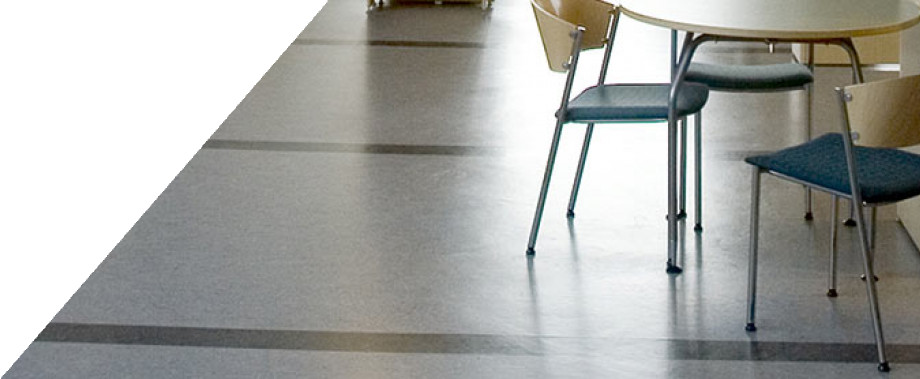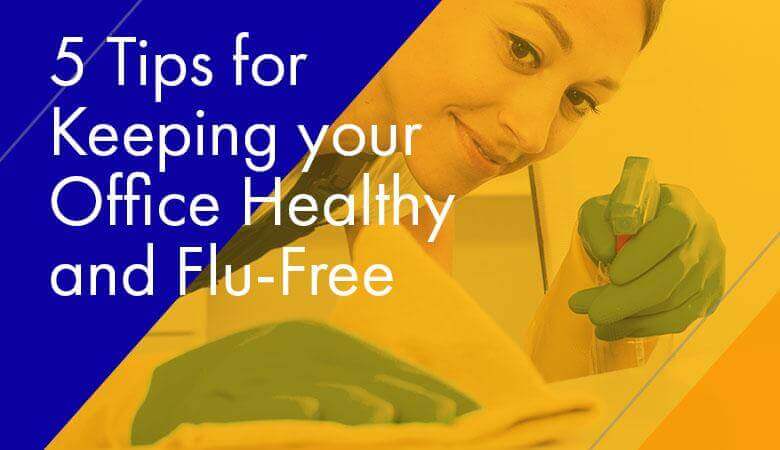5 Tips for Keeping your Office Healthy and Flu-Free
It’s January, and you know what that means…baby it’s cold outside. And with the cold comes an inevitable uptick in the flu virus among employees who are all back at work after holiday breaks. Proper sanitizing of workplaces is perhaps never as important as at this time of the year. Cleaning strategies that thoroughly disinfect, not just surface clean, key areas is crucial.
But do you know the difference between cleaning, disinfecting and sanitizing? Here’s what the Centers for Disease Control (CDC) says:
Cleaning removes germs, dirt and impurities from surfaces or objects using soap or detergent. This process does not necessarily kill germs but by removing them, it lowers their numbers and the risk of spreading infection.
Disinfecting uses chemicals to kill germs on surfaces or objects. This process does not necessarily clean dirty surfaces or remove germs but by killing germs on a surface after cleaning, it can further lower the risk of spreading infection.
Sanitizing lowers the number of germs on surfaces or objects to a safe level, according to public health standards or requirements. This process works by either cleaning or disinfecting surfaces or objects to lower the risk of spreading infection.
With proper cleaning methods top of mind, here are 5 tips for keeping your offices and facilities germ-free, and your employees and tenants at their desks instead of in their beds:
- Clean, Disinfect and Sanitize High-Touch Surfaces. Since the flu virus can “live” on some surfaces for up to 48 hours, the CDC recommends daily sanitizing (even several times a day) of surfaces and objects that are touched often, such as computer keyboards, desks, chairs, countertops, doorknobs, light switches, faucets, phones, handrails and elevators buttons. Visibly soiled surfaces should be cleaned immediately. It’s also important to follow the label instructions on all cleaning products and disinfects.
Electrostatic cleaning machines, such as the Clorox Total 360 System, can target high-touch surfaces and hard-to-reach places in a variety of settings that standard application tools struggle to get. Read more about electrostatic spraying and the Clorox Total 360 System HERE.
4M Executive Vice-President Dan Cline immediately saw the advantages of this technology to serve some of 4M’s clients and has since purchased several Clorox 360s. “We are now able to clean and disinfect areas that we couldn’t have imagined getting to,” said Nelson Irizarry, 4M Florida-based team manager.
- Keep Kitchen Areas Clean. Since kitchen areas are used by everyone in an office, their surfaces, such as countertops, faucets, water fountains, refrigerators, microwaves, dishwashers, water glasses, coffee mugs, plates and utensils are a high risk for bacteria. These surfaces should be thoroughly cleaned and disinfected daily and wiped down throughout the day with alcohol-based wipes to prevent the spread of germs.
- Clean the Vents. Keeping air vents and filters clear of dust and dirt can reduce respiratory irritation and allergies that often lead to colds and infections.
- Educate on Proper Hand Washing Techniques. Washing your hands is one of the easiest and most effective ways to prevent the spread of germs. Unfortunately and unbelievably, this simple step is often overlooked. According to the 2018 Healthy Hand Washing Survey, just two-thirds of respondents say they “always” wash their hands after using a public restroom. Thirty-eight percent report they “frequently” see others leave a public restroom without washing. Those are alarming statistics.
But restroom use is certainly not the only time you should wash up to stay healthy. Keep germs at bay by washing your hands after each of the following:
- coughing or sneezing
- before and after preparing foods
- after using a co-workers’ keyboard or shared office equipment, such as copiers or phones
- whenever you shake someone’s hand
This video by The Centers for Disease Control shows the proper way to keep hands squeaky clean. It’s also important to note that damp hands are 1,000 times more likely to spread bacterial than dry hands, so don’t skip this step. Disposable paper towels offer the most sanitary means of drying hands, as opposed to re-usable cloth towels that harbor millions of bacteria.
If washing up with soap and water is not an option, the CDC recommends using an alcohol-based hand-sanitizer that contains at least 60 percent alcohol.
Finally, installing no-touch paper towel and soap dispensers helps prevent cross contamination. Placing a trashcan near the door also encourages people to use paper towels to open the door and then dispose of them. - Encourage Those Who Are Sick to Stay Home. Let employees and tenants know that staying home when they are sick and potentially contagious is not only an option but completely appropriate and preferred.
Keeping employees and tenants healthy at work when germs are running rampant is not only good for them, it’s good for a businesses’ bottom line. Knowing how to properly clean, sanitize and disinfect during these flu-prone months is crucial. At 4M, we make sure our Team Members are trained in the latest cleaning methods and assure they will always go the extra mile to make sure our clients have the most germ-free facilities possible. It’s just another way we deliver the best, innovative, safe and sustainable cleaning and service solutions for your business. To learn more, give us a call or CLICK HERE to contact us.


